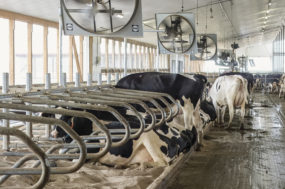Every five years, the USDA’s National Agricultural Statistics Service (NASS) conducts a Census of Agriculture. The data collected helps to identify trends and changes in U.S. agriculture over time.
The 2022 census released earlier this week shows a continued decline in the total number of U.S. farms, which was down 7% from 2017.
The number of dairy operations with off-farm milk sales was 24,082, down almost 39% from five years ago. Today’s farms are producing 5% more milk from roughly the same number of cows.
A report from Rabobank provides even more insight on the impact on dairy farmers and the industry. Due to farm consolidation, 68% of milk in the country now comes from farms with more than 1,000 cows, which comprise only 8% of the total number of dairy farms.
The trend of the larger the farm the lower the cost of production continues to be seen in the 2022 census data.
However, Rabobank says “smaller farms will continue to exist in sizable numbers, especially those practicing diversified agriculture and those that have kept debt levels low.”
Census data across all farm operations shows a rise in the number of new and beginning (operating 10 or fewer years on any farm) as well as young (under the age of 35) producers.
The number of beginning farmers was just over 1 million, up 11% from 2017. They have an average age of 47.1.
The average age of all producers increased slightly to 58.1 and was a smaller age increase than witnessed in prior censuses.
U.S. farms and ranches produced $543 billion in agricultural products, up from $389 billion in 2017. Farm production expenses of $424 billion were up nearly $98 billion from 2017, and only 43% of farms had positive net cash farm income in 2022.
“The latest census numbers put in black and white the warnings our members have been expressing for years,” said American Farm Bureau Federation President Zippy Duvall. “Increased regulations, rising supply costs, lack of available labor and weather disasters have all squeezed farmers to the point that many of them find it impossible to remain economically sustainable.”






